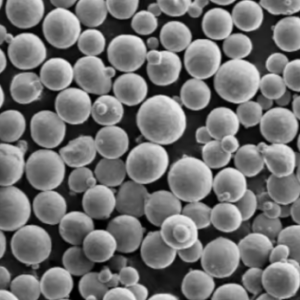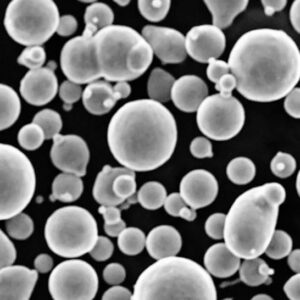배치 기반 디바인딩 소결 장비 는 금속 분말의 제조 및 가공 분야에서 상당한 발전을 이루었습니다. 이 산업은 다양한 응용 분야를 위한 고품질의 정밀한 금속 부품을 생산하는 데 앞장서고 있습니다. 이 기술의 복잡성과 장점을 자세히 살펴보겠습니다.
배치 기반 디바인드 소결 장비 산업 개요
배치 기반 디바인딩 소결 장비는 금속 분말 산업에서 매우 중요합니다. 이 기술은 금속 분말을 제어되고 반복 가능한 배치로 디바인딩 및 소결하여 일관된 품질과 성능을 보장하도록 설계되었습니다. 주요 세부 사항에는 사용되는 금속 분말의 유형, 관련 프로세스 및 완제품의 응용 분야가 포함됩니다.

금속 분말의 종류와 특성
다음에 사용되는 금속 분말 배치 기반 디바인딩 소결 장비 는 그 구성과 특성이 매우 다양합니다. 다음은 몇 가지 일반적인 금속 분말을 요약한 자세한 표입니다:
| 금속 분말 | 구성 | 속성 | 특성 |
|---|---|---|---|
| 스테인리스 스틸 316 | Fe, Cr, Ni, Mo | 높은 내식성, 강도 | 의료 및 식품 산업에서 널리 사용 |
| 티타늄 Ti-6Al-4V | Ti, Al, V | 높은 중량 대비 강도 비율 | 항공우주, 바이오메디컬 애플리케이션 |
| 구리 C11000 | Cu | 뛰어난 전기 전도성 | 전기 부품 |
| 니켈 합금 625 | Ni, Cr, Mo, Nb | 우수한 내식성 및 내산화성 | 해양 및 화학 처리 |
| 알루미늄 6061 | Al, Mg, Si | 가볍고 우수한 기계적 특성 | 자동차, 항공우주 |
| 철 Fe-PM | Fe, C | 높은 강도, 우수한 가공성 | 자동차 부품 |
| 코발트-크롬(CoCr) | Co, Cr, Mo | 높은 내마모성, 생체 적합성 | 의료용 임플란트, 치과용 애플리케이션 |
| 텅스텐 카바이드(WC-Co) | W, C, Co | 매우 단단하고 내마모성이 뛰어남 | 절삭 공구, 연마재 |
| 청동(Cu-Sn) | Cu, Sn | 우수한 내마모성, 가공성 | 베어링, 부싱 |
| 마그네슘 AZ91D | Mg, Al, Zn | 가볍고 우수한 강도 | 항공우주, 자동차 |
배치 기반 디바인드 소결 장비의 응용 분야
배치 기반 디바인딩 소결 장비의 적용 분야는 매우 광범위하고 다양합니다. 다음은 이러한 금속 분말이 어디에 사용되는지 보여주는 표입니다:
| 애플리케이션 | 설명 |
|---|---|
| 항공우주 | 터빈 블레이드, 구조 부품과 같은 가볍고 튼튼한 구성품 |
| 의료 | 생체 적합성 임플란트, 수술 기구, 치과 보철물 |
| 자동차 | 엔진 부품, 기어, 베어링, 브레이크 부품 |
| 전자 제품 | 전도성 부품, 커넥터, 방열판 |
| 산업 기계 | 내마모성 부품, 절삭 공구, 금형 |
| 에너지 | 터빈, 석유 및 가스 장비용 부품 |
| 소비재 | 주방 용품과 같은 고강도, 부식 방지 제품 |
| 해양 | 해양 환경을 위한 내식성 부품 |
| 방어 | 군용 장비를 위한 강력하고 내구성 있는 부품 |
| 화학 처리 | 화학 물질 취급을 위한 부식 방지 장비 |
사양, 크기, 등급 및 표준
배치 기반 디바인딩 소결 장비를 다룰 때는 사양, 크기, 등급 및 표준을 이해하는 것이 필수적입니다. 자세한 표는 다음과 같습니다:
| 금속 분말 | 크기(µm) | 성적 | 표준 |
|---|---|---|---|
| 스테인리스 스틸 316 | 5-45 | A, B, C | ASTM F138, ISO 5832-1 |
| 티타늄 Ti-6Al-4V | 15-45 | 5학년 | ASTM B348, ISO 5832-3 |
| 구리 C11000 | 10-75 | 110, 122 | ASTM B170, C10100 |
| 니켈 합금 625 | 15-45 | NA625 | ASTM B443, AMS 5599 |
| 알루미늄 6061 | 10-45 | T6 | ASTM B211, B221 |
| 철 Fe-PM | 45-150 | 다양한 | MPIF 표준 35 |
| 코발트-크롬(CoCr) | 15-45 | F75 | ASTM F75, ISO 5832-4 |
| 텅스텐 카바이드(WC-Co) | 0.4-30 | 다양한 | ISO 3878, ASTM B777 |
| 청동(Cu-Sn) | 20-150 | 다양한 | ASTM B22 |
| 마그네슘 AZ91D | 45-150 | AZ91D | ASTM B93, B94 |
공급업체 및 가격 세부 정보
배치 기반 디바인드 소결 장비 산업에서는 신뢰할 수 있는 공급업체를 찾고 가격을 이해하는 것이 매우 중요합니다. 다음은 몇 가지 주요 공급업체와 대략적인 가격이 표시된 표입니다:
| 공급업체 | 금속 분말 | 가격(USD/kg) | 참고 |
|---|---|---|---|
| 카펜터 기술 | 스테인리스 스틸 316, 티타늄 Ti-6Al-4V | $50 – $150 | 고품질 의료 및 항공우주용 분말 |
| 회가나스 AB | 철 Fe-PM, 청동(Cu-Sn) | $10 – $50 | 광범위한 산업 애플리케이션 |
| 샌드빅 재료 기술 | 니켈 합금 625, CoCr | $100 – $300 | 고성능 합금 전문 기업 |
| 프렉스에어 표면 기술 | 알루미늄 6061, 텅스텐 카바이드(WC-Co) | $20 – $200 | 항공우주 및 절삭 공구에 탁월 |
| 고급 파우더 제품 | 구리 C11000, 마그네슘 AZ91D | $15 – $100 | 전기 및 자동차 애플리케이션 |
배치 기반 디바인드 소결 장비의 장점과 한계
배치 기반 디바인드 신터 장비의 장단점을 이해하면 정보에 입각한 결정을 내리는 데 도움이 될 수 있습니다. 다음은 비교표입니다:
| 측면 | 장점 | 제한 사항 |
|---|---|---|
| 품질 관리 | 일관된 고품질 출력 | 정밀한 제어 및 모니터링 필요 |
| 다용도성 | 다양한 금속 분말 처리 가능 | 배치 크기에 따라 제한됨 |
| 비용 효율성 | 연속 프로세스 대비 낮은 운영 비용 | 초기 투자 비용이 높을 수 있습니다. |
| 복잡한 도형 | 복잡한 지오메트리 생성 가능 | 일부 도형에는 추가 마감이 필요할 수 있습니다. |
| 에너지 소비량 | 다른 방법보다 에너지 효율이 높은 경우가 많습니다. | 에너지 비용은 여전히 상당할 수 있습니다. |
| 확장성 | 다양한 생산량에 맞게 쉽게 확장 가능 | 확장 시 추가 장비가 필요할 수 있습니다. |
| 환경 영향 | 기존 방식에 비해 배출량 및 폐기물 감소 | 디바인딩 재료의 폐기는 어려울 수 있습니다. |
기술 파라미터 및 성능 지표
다음은 배치 기반 디바인딩 소결 장비에 대한 몇 가지 기술 파라미터와 성능 지표를 요약한 표입니다:
| 매개변수 | 가치 | 참고 |
|---|---|---|
| 온도 범위 | 1200°C - 1400°C | 처리 중인 자료에 따라 다름 |
| 분위기 제어 | 아르곤, 질소, 수소 | 불활성 또는 환원 대기 |
| 주기 시간 | 10 - 24시간 | 배치 크기 및 재료에 따라 다름 |
| 배치 크기 | 1 - 100kg | 장비 용량에 따라 조정 가능 |
| 난방 속도 | 1 - 10°C/분 | 결함 방지를 위한 제어 |
| 냉각 속도 | 1 - 5°C/분 | 재료 특성을 보장하도록 제어 |
| 디바인딩 시간 | 2 - 8시간 | 바인더 유형 및 양에 따라 다름 |
| 소결 시간 | 4 - 12시간 | 소재 및 원하는 속성에 따라 |
| 전력 소비량 | 10 - 50kW | 장비 크기 및 공정에 따라 다름 |
| 수율 | 95% – 99% | 적절한 제어를 통한 높은 수율 |
비교 배치 기반 디바인딩 소결 장비 다른 방법으로
배치 기반 디바인딩 소결 장비는 다른 방식에 비해 몇 가지 장점이 있습니다. 다음은 비교 분석입니다:
| 방법 | 장점 | 단점 |
|---|---|---|
| 배치 기반 디바인딩 소결 | 일관된 품질, 에너지 효율, 다양한 활용성 | 높은 초기 투자 비용, 제한된 배치 규모 |
| 연속 소결 | 대규모 생산에 적합한 높은 처리량 | 개별 배치에 대한 통제력 저하, 에너지 비용 증가 |
| 적층 제조 | 복잡한 형상, 낭비 최소화, 신속한 프로토타입 제작 | 느린 생산 속도, 높은 재료비 |
| 전통 분말 야금 | 확립된 기술력, 폭넓은 소재 범위 | 더 높은 배출량, 덜 정밀한 제어 |
| 열간 등방성 프레스(HIP) | 우수한 소재 특성, 고밀도 | 매우 높은 비용, 특정 애플리케이션으로 제한 |

자주 묻는 질문
| 질문 | 답변 |
|---|---|
| 배치 기반 디바인딩 소결 장비란 무엇인가요? | 금속 분말을 제어된 배치로 탈결 및 소결하여 처리하는 데 사용되는 장비의 일종입니다. |
| 어떤 금속을 가공할 수 있나요? | 스테인리스 스틸, 티타늄, 구리, 니켈 합금, 알루미늄, 철, 코발트 크롬, 텅스텐 카바이드, 청동 및 마그네슘과 같은 다양한 금속을 사용할 수 있습니다. |
| 주요 혜택은 무엇인가요? | 일관된 품질, 다용도성, 비용 효율성, 복잡한 형상을 제작할 수 있는 능력, 환경에 미치는 영향 감소. |
| 제한 사항은 무엇인가요? | 정밀한 제어, 높은 초기 투자 비용, 디바인딩 재료의 폐기 문제가 필요합니다. |
| 다른 방법과 비교하면 어떤 점이 다른가요? | 더 나은 품질 관리와 다양한 기능을 제공하지만 연속 방식 및 적층 제조에 비해 배치 크기와 초기 비용에 한계가 있습니다. |
| 눈에 띄는 공급업체는 누구인가요? | 카펜터 테크놀로지, 회가나스 AB, 샌드빅 머티리얼 테크놀로지, 프렉스에어 표면 기술, 고급 파우더 제품 등의 공급업체가 있습니다. |
결론
그리고 배치 기반 디바인딩 소결 장비 산업은 고품질의 정밀한 금속 부품을 생산하는 데 있어 수많은 이점을 제공하는 현대 제조 환경의 중요한 부분을 차지합니다. 금속 분말의 유형, 응용 분야, 사양 및 이 기술의 비교 이점을 이해함으로써 이해관계자는 정보에 입각한 의사 결정을 내리고 그 잠재력을 최대한 활용할 수 있습니다. 이 산업은 계속 발전하고 있으며, 앞으로 더 많은 발전과 광범위한 응용 분야를 약속하고 있습니다.














